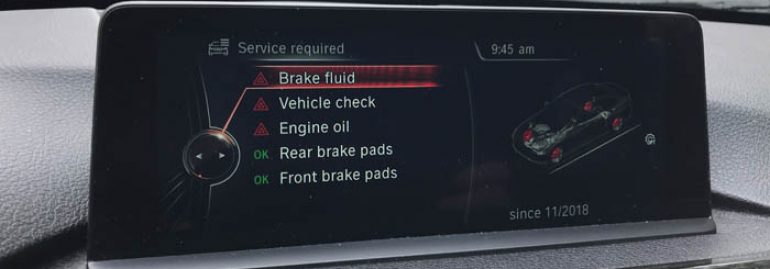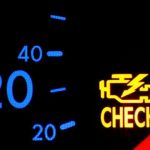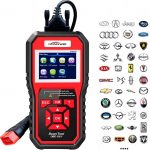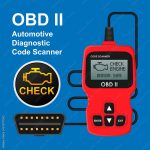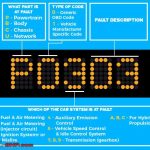Auto diagnostic codes are a common way to diagnose car problems. Depending on which system you are using, they can mean many different things. For example, you might see one code for a car problem, but another one could mean that there is a more severe problem. Thankfully, auto diagnostic tools have advanced enough to recognize most auto diagnostic codes. The next time you get an error message on your dashboard, you’ll know exactly what to do to fix the problem.
OBD-II codes
If you’ve had trouble with your car and its Check Engine Light, you’ve probably noticed that the indicator is not working properly. This can cause a number of problems for you. There are two different types of obd codes: generic codes and manufacturer-specific codes. The first identifies the specific code type and the second specifies the specific system or fault designation on your car. Regardless of what type you have, knowing how to decode these codes is important for auto diagnostics.
A pending code means that the emission control system has failed to function properly. If this happens again, your Check Engine Light will be lit. If this happens repeatedly, the pending code becomes an active code. The remaining generic codes cover various parts of the car. These include P – Powertrain, which covers the engine, transmission, fuel system, ignition, and emissions. There are also categories for body and brake fluid, axles, and undefined.
When a manufacturer-specific code comes up, you’ll be able to quickly determine what problem it is. For example, if your car is having trouble with its catalytic converter, it will display a P0420 code. This code indicates a problem with the catalytic converter. It’s a good idea to consult your vehicle’s service manual to determine what the problem is.
You may not be aware of the complexity of your car’s engine. The check engine light can appear mysterious and difficult to read. But with the help of an OBD-II code reader, you’ll be able to pinpoint the issue and fix it. With this device, you can easily interpret the data that the car is sending with your Bluetooth-enabled phone. You can also use it to send notifications directly to your fleet or maintenance department.
Diagnostic trouble codes are used to help repair shops determine what’s wrong with your car. They contain a five-digit alphanumeric code that indicates the cause of the problem. The codes are also mandatory on all cars with OBDII systems. And while each manufacturer has their own unique set of codes, most vehicles have the same list of codes. By understanding these codes, you can avoid costly downtime.
Manufacturer-specific codes
A car’s manufacturer-specific auto diagnostic codes are a key part of troubleshooting. These codes can be useful for many reasons, including indicating that a specific component or system is malfunctioning. These codes are generally used by car dealerships and insurance companies, and they can be located on a metal plate or stamped into the body of the vehicle. While some codes are more specific than others, they can help you determine the cause of a vehicle malfunction.
When it comes to auto diagnostic codes, there are two basic types. General codes (GPCs) and manufacturer-specific codes (PSDs). The first type is generally a generic code that applies to all vehicles, while the latter is specific to one particular make and model. General codes refer to problems across all makes and models, but manufacturer-specific codes refer to problems specific to a given vehicle brand. Manufacturer-specific codes are indicated by the second digit.
While OBD codes can confuse a lot of people, they should be treated with caution. They don’t mean that you need to replace a certain part or service your car – they’re simply a clue as to what’s wrong with your car. Sometimes, the issue is exacerbated by a part store that tries to sell you. If this happens, you can’t expect the technician to diagnose the problem correctly.
OBD II codes are used on cars and light trucks produced after 1996. These codes contain five characters, each representing a different aspect of the vehicle’s malfunction. A vehicle equipped with OBD-II is likely to display these DTCs. It’s important to understand that each DTC can indicate different problems depending on its type. One of these codes can be the MIL (monitor indicator light) which illuminates after a failed drive. The second type is a trouble code freeze frame, which can cause serious damage.
Another type of code, P0128, indicates that the temperature of the engine coolant is below the normal range. This code is not manufacturer-specific, but rather standardized, and can be understood according to SAE definitions. It can also indicate an issue with the fuel and air metering subsystem. Generally, a vehicle will display a P0128 code if it is experiencing an issue with its air or fuel metering subsystem.
SAE codes
OBD2 and SAE codes are used to diagnose car problems. These codes are made up of two digits, the first of which indicates the type of fault. The next two digits indicate the system and fault designation, while the last two are reserved for manufacturer-specific faults. The most commonly known codes are B0xxx and P0xxx. However, the latest document eliminates the grouping of DTCs into functional areas.
When the check engine light illuminates, the trouble code will tell a mechanic what is causing the problem and what repairs are necessary. A check engine light is usually a symptom of a malfunction in the fuel level sensor circuit system or the engine’s emissions control system. These warning lights can be as simple as a loose gas cap, or they can be indicative of a more complicated problem that requires a more costly repair.
While the Check Engine Light is a signal of an engine problem, the actual fault description is determined by the last two digits of the code. The last digits of each code are different, and they are not the same as those in other vehicles. OBD Auto Doctor software is a free program that can read and clear codes, including the check engine light. The program also includes helpful tips on fixing the problem.
OBD code definitions can be confusing for people who are unfamiliar with them. While the error codes indicate that a part is wrong, they are actually indicative of a problem with the system, and require further diagnosis. Buying an auto part that does not diagnose the problem can also make the problem worse. Some auto parts stores may try to sell a part based on the auto diagnostic code, when this could be an unnecessary expense.
The purpose of trouble codes is to help mechanics diagnose problems. These codes are stored in the Powertrain Control Module (PCM) of a vehicle. They are generated when a malfunction occurs in the car. In many cases, these codes describe the problem, while others identify a specific part. The Society of Automotive Engineers publishes a manual of common faults and how to solve them. When you’re dealing with a fault, knowing the meaning of these codes can help you find the problem and fix it.
Generic codes
The first part of a DTC, or Diagnostic Trouble Code, will tell you if the code is specific to a specific vehicle make or model, or if it is generic. The last three numbers of the code will tell you if it applies to all OBD-II systems. The largest subset of DTCs is powertrain, which deals with engine, transmission, and electrical systems. Other subsets include network and integration, body, and chassis. The first letter of the code is followed by a number, and these codes can be triggered by faulty computer systems, sensor malfunctions, or faulty sensors.
A diagnostic trouble code is a code a technician can read from the car’s on-board computer. It corresponds with the fault in the car’s electrical system or engine. If an auto diagnostic code is triggered by an error, a technician can read it from the car’s memory and fix the problem. There are two main categories of trouble codes: B-codes and C-codes. B-codes are related to convenience and safety while C-codes are used for functions that occur outside the passenger compartment.
OBD2 codes contain a letter prefix and four numeric digits. A scanner can retrieve these codes and use them to troubleshoot a vehicle. A diagnostic scan tool is necessary to read these codes, which contain information that can help repair your car. The first digit is the generic code, which is the default code for most cars following the OBD-II standard. The second digit is the manufacturer’s code, which is specific to a car’s model. The last two digits determine the fault designation.
An OBD2 code is an alphanumeric value that corresponds to a specific problem. The SABIC (Society of Automotive Engineers) developed the trouble code in order to comply with OBD-II emission regulations in the US. Currently, the diagnostic trouble codes are divided into four categories, generic or global codes, and enhanced or manufacturer-specific codes. If you have an OBD-II scanner, it is important to understand the codes that are displayed by the SABIC (On-Board Diagnostic) software.


